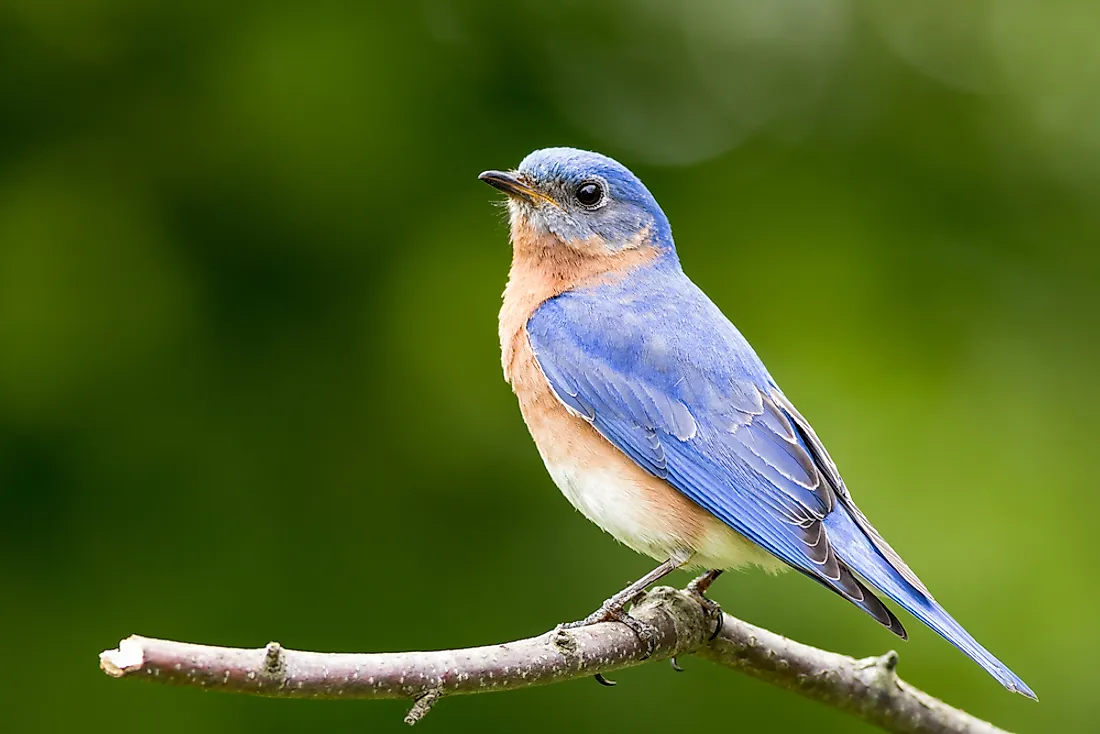What Is The New York State Bird?

New York is a US state located in the northeastern region of the country. The state covers an area of 54,555 sq mi and has a population of 19,542,209, ranking as the 27th most extensive and 4th most populous in the country. New York was one of the original Thirteen Colonies, and is nicknamed "The Empire State." In addition to its official flag, New York has numerous state symbols, including a state mammal (beaver), state tree (sugar maple), state flower (rose), and state fruit (apple). New York also has an official state bird: the eastern bluebird.
State Bird
The eastern bluebird was designated as New York's state bird in 1970. However, the American robin was previously selected as the state bird, but a campaign by the New York State Federation of Women's Clubs (GFWC-NY) in 1928 determined that most people preferred the bluebird. Forty years later, the eastern bluebird was formally adopted as the state bird through the signing of New York State Consolidated Laws Article 6, Section 78 by Governor Nelson Rockefeller in May 1970. The eastern bluebird is also the state bird of Missouri, while the mountain bluebird is the state bird of Nevada and Idaho.
Physical Description
The eastern bluebird is a medium-sized bird from the thrush family. Males have a deep blue plumage, while females are gray-blue in color. Adults have a white underbelly with reddish brown throats. Mature birds grow to between 6.3 and 8.3 inches in length, have a wingspan that ranges between 9.8 and 12.6 inches, and weigh between 0.95 and 1.2 oz.
Food
The diet of the eastern bluebird primarily consists of insects and invertebrates, but they also feed on wild fruits and berries. For example, the bird’s preferred food sources include beetles, katydids, crickets, grasshoppers, spiders, centipedes, millipedes, earthworms, snails and sow bugs. When insects are scarce, the eastern bluebird will feed on fruits, preferably hackberry seeds, sumac, wild grape, hawthorn, and dogwood. The species is also known to occasionally feed on black raspberries, Virginia creeper, pokeberries, eastern juniper, and honeysuckle. The availability of food during the winter typically determines whether or not the bird will migrate. If eastern bluebirds do not migrate, they huddle together in thickets and orchards close to sources of food.
Habitat
The eastern bluebird prefers to inhabit open country with trees, but little and sparse ground cover. Its natural habitat includes burned pine savannas, open woodlands, forest openings, and beaver ponds. The species now also inhabits suburban parks, grazing and agricultural fields, and golf courses. The species has a range that stretches from eastern North America south to Nicaragua. They are social birds that move in flocks of up to 100 individuals, but become territorial during breeding season and throughout the winter. Mating occurs during spring and summer, and both males and females raise their young togerther by delivering insects and protecting the nest from intruders. Parents occasionally raise two broods each year. The first brood leaves the nest in the summer, while younger chicks spend the entire winter in the nest. In the 1960s and 1970s, the eastern bluebird population decreased significantly, but conservation efforts and campaigns have resulted in its resurgence.











